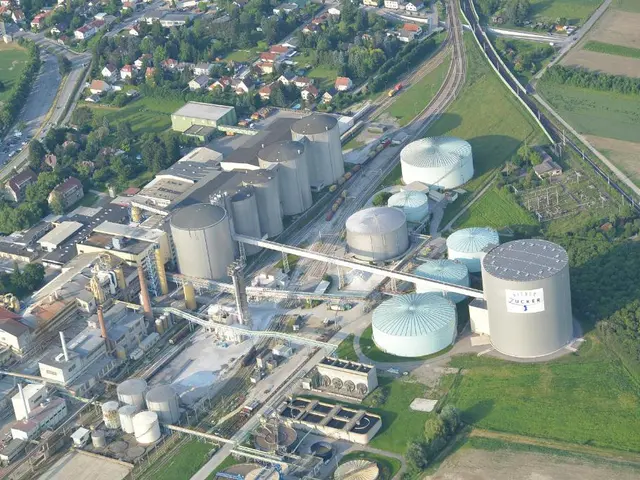U.S. Egg Prices Skyrocket Amid Avian Flu Outbreak
As of December 11, recent USDA data shows that 426 commercial farms and 586 backyard farms have tested positive for High Pathogenic Avian Influenza (HPAI) in the past 30 days. This marks a tragic loss of over 72.5 million birds in 2022 and 2023 alone. To put this into perspective, the last major Avian Flu outbreak in the U.S. occurred in 2015, where over 50 million birds succumbed to the virus.
The highly contagious bird flu not only poses a severe threat to chicken flocks, but it can decimate whole communities in less than 48 hours. This deadly disease could cause a surge in egg and poultry prices.
Unfortunately, the bird death toll has been escalating since October. In October alone, 1.37 million birds were lost, followed by 8 million in November and 4.33 million as of December.
Cal-Maine Foods Inc., the leading U.S. egg producer and distributor, reported on December 13 that one of its Kansas farms tested positive for HPAI. Of the 684,000 laying hens tested, 1.6% of the flock tested positive for the disease. Consequently, production at the facility has ceased, and the company is rerouting production to other facilities to maintain supply stability.
Although Cal-Maine has not reported any positive tests at its other facilities, it is taking stringent measures to prevent the spread of the disease not only within its facilities but also to nearby complexes with over one million birds.
On December 29, over 2.6 million birds were culled due to HPAI on a Trillium Farm in Ohio's Hardin County. This is not the first time that Ohio has been hit with an HPAI outbreak: in late November, 1.3 million birds were culled in Union County due to another HPAI outbreak.
Will history repeat itself?
Egg prices spiked to an astonishing $5.46 per dozen by late December, only to plummet once companies stockpiled eggs and the virus outbreak slowed. However, the increasing number of Avian Flu outbreaks is once again leading to supply concerns, creating uncertainty about how high prices could climb and for how long.
High egg prices have boosted profitability for companies like Cal-Maine, which has faced criticism and calls for an investigation by the Federal Trade Commission for alleged price-gouging from certain Senate Democrats.
As the virus continues to wreak havoc, egg producers are left grappling with the difficult decision of balancing their supply with changing consumer demand during key holiday seasons to minimize potential business losses.
Urner Barry's Large Egg Index, which tracks midwest egg prices, has risen nearly 18% since December 13 to $2.10 per dozen. Egg producers' feathered flocking strategies significantly influence market conditions during the holiday season, as Thanksgiving and Christmas are typically the peak times for egg demand.
Alicia Wallace and Danielle Wiener-Bronner from CNN have contributed to this report.
Related Articles
The ongoing Avian Flu outbreak is having a substantial impact on egg production and prices in the United States. Here's how:
Effects on Egg Production and Prices
- Decreased Production:
- Over 136 million birds have been culled, reducing the production capacity of U.S. egg farms by a significant margin. This is leading to supply shortages and higher prices for eggs.
- Price Surge:
- Egg prices have shot up to record highs, with the average cost of a dozen eggs exceeding $4 in late 2024 and reaching as high as $12 in some areas[3][5].
- Disruptions in the Supply Chain:
- The loss of millions of birds has led to bottlenecks in the poultry supply chain, further exacerbating the egg shortage. Grocery stores have started to report empty shelves, and availability of eggs is limited in many areas[3][5].
- Government Support:
- The U.S. Department of Agriculture (USDA) has provided financial assistance to affected farmers, offering compensation packages totaling over $1.14 billion[3].
- Vaccine Developments:
- Researchers are working on more effective bird flu vaccines to prevent future outbreaks, which could help stabilize egg production and prices[3].
- Operational Adjustments:
- Poultry farmers are adopting enhanced health monitoring systems and protective barriers around their farms to minimize the risk of infection and keep their flocks healthy[3].
- Regulatory Compliance:
- Cage-free laws introduced in several U.S. states, such as California, Michigan, and Arizona, add financial pressure on farmers, but they act to enhance animal welfare[3].
- Supplier Diversification:
- Companies are turning to unaffected regions or other suppliers to ensure a steady supply of eggs and mitigate the impact of localized outbreaks[3].
Future Outlook
- Egg prices are expected to remain elevated well into 2025, with potential stabilization in the latter half of the year. The complex interplay of ongoing avian flu challenges, cage-free regulations, and rising operational costs mean that consumers should prepare for volatility in the egg market[3].
In summary, the ongoing Avian Flu outbreak is significantly impacting egg production and prices in the U.S., leading to shortages and record-high prices. Farmers and companies are working together to mitigate losses using a range of strategies, including biosecurity measures, government financing, and operational adjustments.








